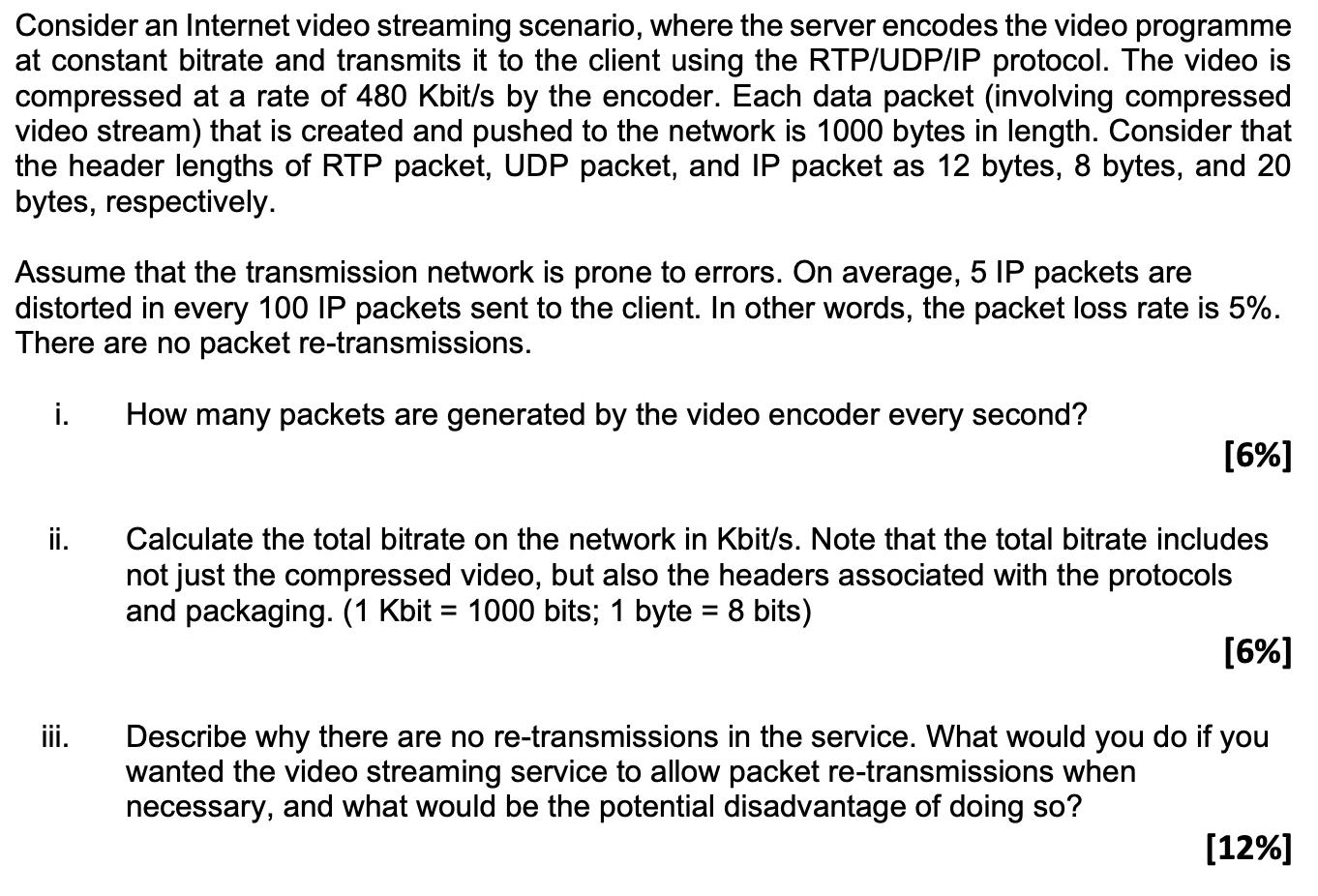Answered step by step
Verified Expert Solution
Question
1 Approved Answer
Consider an Internet video streaming scenario, where the server encodes the video programme at constant bitrate and transmits it to the client using the

Consider an Internet video streaming scenario, where the server encodes the video programme at constant bitrate and transmits it to the client using the RTP/UDP/IP protocol. The video is compressed at a rate of 480 Kbit/s by the encoder. Each data packet (involving compressed video stream) that is created and pushed to the network is 1000 bytes in length. Consider that the header lengths of RTP packet, UDP packet, and IP packet as 12 bytes, 8 bytes, and 20 bytes, respectively. Assume that the transmission network is prone to errors. On average, 5 IP packets are distorted in every 100 IP packets sent to the client. In other words, the packet loss rate is 5%. There are no packet re-transmissions. i. How many packets are generated by the video encoder every second? ii. iii. [6%] Calculate the total bitrate on the network in Kbit/s. Note that the total bitrate includes not just the compressed video, but also the headers associated with the protocols and packaging. (1 Kbit = 1000 bits; 1 byte = 8 bits) [6%] Describe why there are no re-transmissions in the service. What would you do if you wanted the video streaming service to allow packet re-transmissions when necessary, and what would be the potential disadvantage of doing so? [12%]
Step by Step Solution
There are 3 Steps involved in it
Step: 1
i The video encoder generates 480000 bits per second This is then packetized into 1000 byte pa...
Get Instant Access to Expert-Tailored Solutions
See step-by-step solutions with expert insights and AI powered tools for academic success
Step: 2

Step: 3

Ace Your Homework with AI
Get the answers you need in no time with our AI-driven, step-by-step assistance
Get Started


